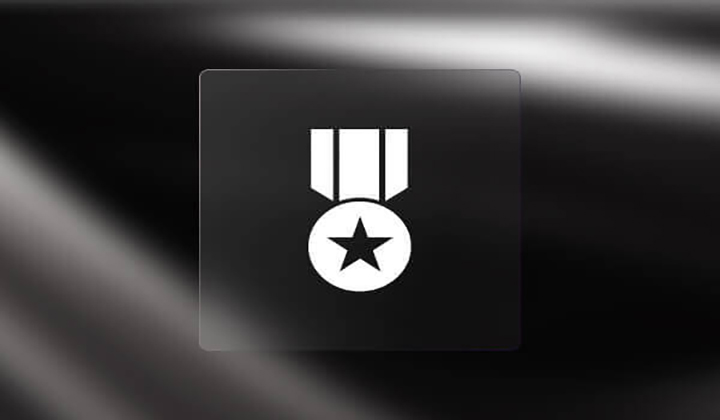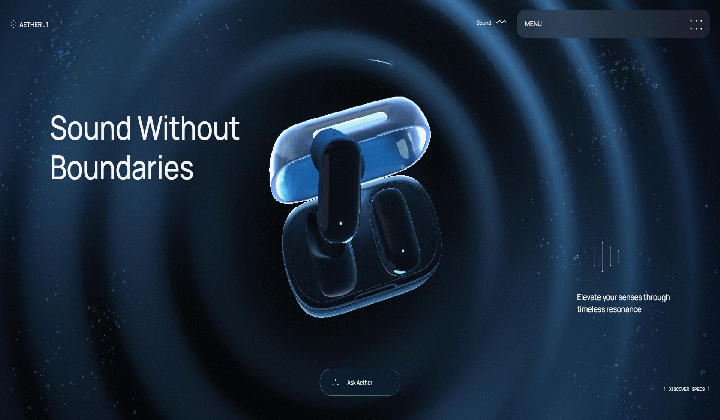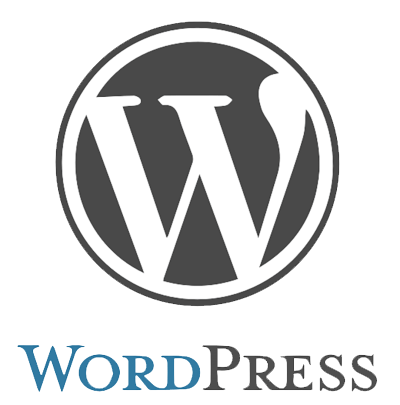High-Converting Website Design Services for Businesses

In today’s fiercely competitive digital market, both at home and abroad, truly untapped niche markets are increasingly rare. Most businesses must differentiate themselves in a highly homogenized environment to stand out and carve a path for survival and growth. A website, as a core component of online marketing, cannot rely solely on visually appealing UI/UX design to achieve strong traffic and conversion from the moment it launches. Truly effective website design must integrate in-depth user experience strategies with systematic digital marketing planning. Such websites are never the result of spontaneous ideas or learning-by-doing, but are crafted by professional teams with clear business objectives, thorough planning, and repeated refinement. Only teams with multidisciplinary expertise — in web design and development, brand strategy, content planning, and SEO optimization — can truly build a high-level website with market penetration and sustained conversion capabilities. Otherwise, even a well-structured site may fall short of supporting a company’s growth goals.
This article aims to comprehensively analyze how to build a professional website with high conversion capability for businesses. Behind a high-conversion website lies the integration of multiple technologies and strategies, including UI/UX design, front-end development, content strategy, and search engine optimization. For business owners or practitioners aspiring to expand their internet marketing channels, this article will address key issues step by step—from website planning and development implementation to SEO optimization—helping you clarify the complete path to creating an efficient website.
For easier reading and reference, the table of contents is listed below, covering major chapters from initial strategic planning to later-stage operational optimization. Each heading is set with an anchor link, allowing readers to quickly jump to relevant content according to their interests, saving reading time and improving reading efficiency.
- Brand Visual Identity and Web Design
- Brand Color System: The First Layer of Unified Visual Perception
- Typography System: A Unified Expression of Brand Tone and Readability
- Images and Videos: Key Materials for Emotional Communication and Scene Building
- Layout and Spacing: The Invisible Power of Organizational Structure and Visual Rhythm
- High Conversion-Oriented Content Design Strategies
- On-Page and Off-Page SEO Execution on Websites
- Security and Privacy Policy Compliance
- Submitting Websites to Major Global Search Engines to Acquire Traffic
一、Brand Visual Identity and Web Design
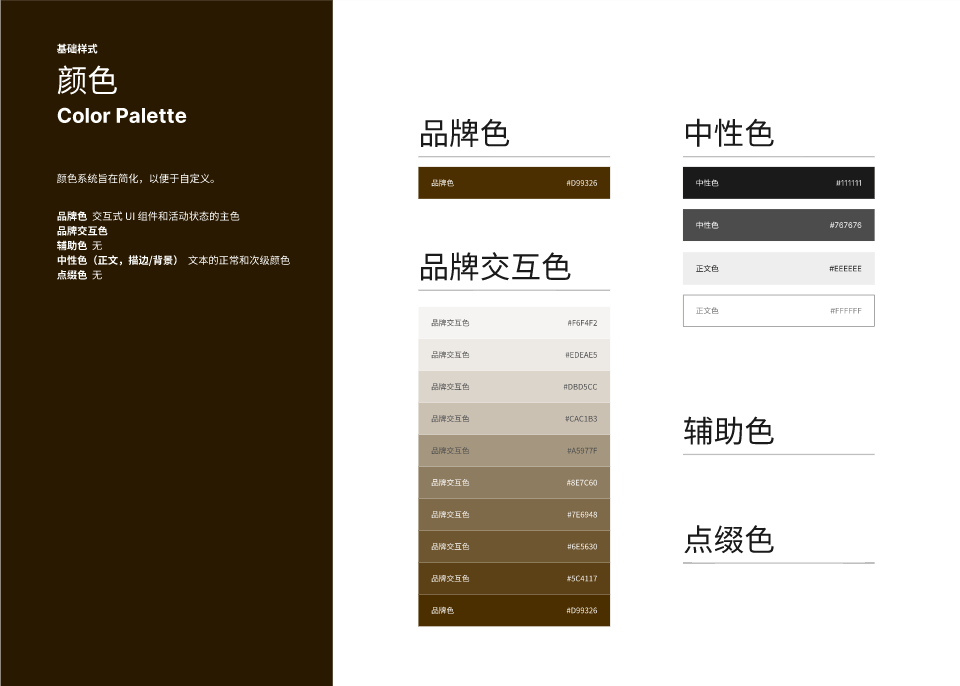
In website design, brand visual identity is not merely an artistic decoration but a comprehensive and strategic visual language system. Its core task is to convey the brand’s personality, positioning, and tone to users visually, enhancing brand recognition and trust. A truly high-converting website is never a random patchwork of elements; instead, every color, font, image, animation, layout, and whitespace follows a unified standard, coordinating and complementing each other.
A website is the core carrier of a brand in the digital world. The execution of the visual identity system directly determines the first impression of the brand’s professionalism. Therefore, high-end web design must be built upon a mature brand visual system.
Through the unified management of systematic elements such as colors, typography, images, videos, and layouts, brand visual identity is precisely implemented on the website, creating a strong, recognizable, trustworthy, and high-converting digital presence for the business. This transformation from visual language to emotional connection is exactly what allows a website to stand out in a fiercely competitive market.
Brand Color System: The First Layer of Unified Visual Perception
In the entire brand visual identity system, color is the most fundamental and recognizable element. A website’s primary color scheme usually derives from the brand’s identity colors. Proper color hierarchy not only enhances brand recognition but also optimizes user navigation paths and increases conversion rates. Colors on a website are generally divided into:
- Primary Color: Used to build the core impression of the brand.
- Interactive Color: High-contrast colors for interactive elements such as buttons and links.
- Secondary Color: Provides visual layers and extension to the primary color, preventing monotony.
- Accent Color: Used to highlight important information or emphasize visual focal points.
Typography System: A Unified Expression of Brand Tone and Readability
Typography’s role on a website goes beyond conveying information; it also reflects the brand’s tone and style. From headings and body text to button labels, each font category should follow systematic standards regarding font size, weight, and spacing. Choosing a font system that aligns with the brand’s tone is a key step in enhancing the overall quality and user experience of the website. Common practices include:
- Choose visually impactful brand fonts for headings to convey professionalism or approachability.
- Body fonts emphasize readability, especially on mobile devices, balancing size and line spacing.
- Interface text such as buttons and labels focuses on simplicity and clarity for ease of use.
Images and Videos: Key Materials for Emotional Communication and Scene Building
Images and videos are the most expressive carriers of brand emotion and storytelling. Especially in today’s visually driven world where user attention is dominated by visual information, using high-quality materials becomes crucial:
- Brand Image Style: Consistent composition, lighting, human poses, or product presentation to form a unique visual style.
- Contextual Videos: Such as brand promotional videos or interactive background videos that quickly capture users’ emotional resonance at key points.
- Image and Text Combination Design: Using infographics, product photos, user scenario images, etc., to lower the comprehension threshold and enhance visual persuasiveness.
Layout and Spacing: The Invisible Power of Organizational Structure and Visual Rhythm
In web visual identity, layout structure and spacing systems may not be conspicuous but are decisive factors for overall coherence and reading experience. Excellent web design achieves this through reasonable grid systems, content arrangement, and whitespace strategies:
- Unified Module Structure: Enhances consistency across pages and improves navigation efficiency.
- Ample Whitespace: Allows content to breathe, reduces visual burden, and highlights key information.
- Rhythmic Paragraph Distribution: Guides users through natural browsing with varied rhythms and layers, increasing dwell time.
二、High Conversion-Oriented Web Content Design Strategies
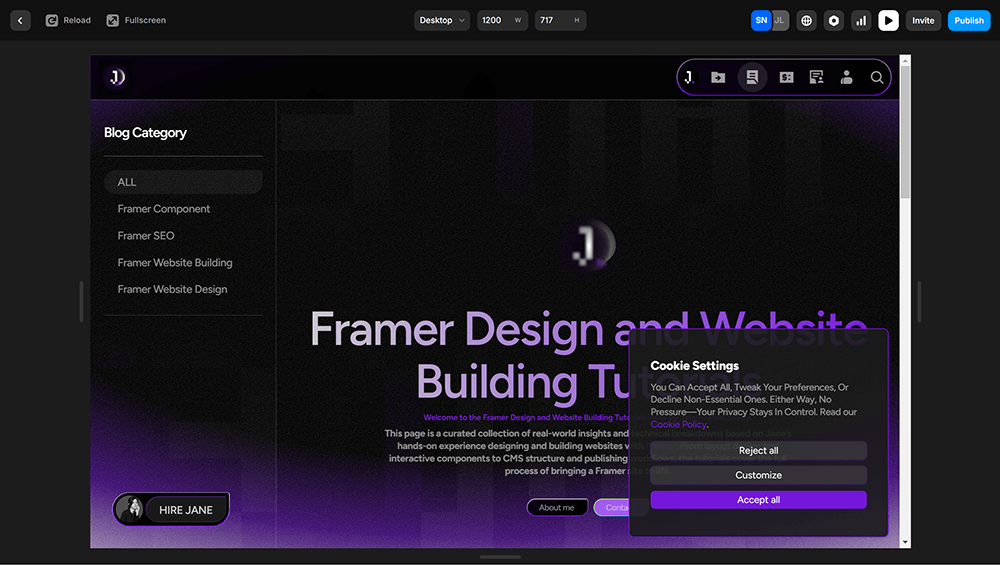
In the process of building a high-conversion business website, content design is one of the core factors that directly influence user behavior and conversion efficiency. Whether a page has commercial value depends largely on whether its content is truly "designed for users" and organized and expressed around clear marketing objectives. Especially within an SEO-driven traffic framework, content design strategies must not only satisfy search engine indexing logic but also guide users to complete valuable actions such as inquiries, trials, purchases, or messages.
The content design referred to in this article is not limited to copywriting itself but includes a multidimensional comprehensive design process encompassing theme planning, copywriting, information architecture, integration of visual aids, and CTA button placement. By integrating theme planning, copy expression, information hierarchy, and CTA guidance into a strategic content design, the website's readability and aesthetics can be enhanced, while substantially improving user conversion efficiency. This not only reflects design capability but also directly indicates the level of internet marketing behind the website.
Theme Planning Driven by User Value and Keywords
Efficient web content planning must be based on user search intent and keyword data to build a clear thematic strategy. By analyzing search behavior, user needs at different stages can be identified, allowing for setting goals and content layers for each page.
1. Content Positioning
- Clarify the core purpose of the page (e.g., information acquisition, product display, conversion guidance).
- Match appropriate information depth and presentation forms for different types of users.
2. Keyword-Driven
- Use keyword research tools (such as Google Keyword Planner, Ahrefs, etc.) to identify core keywords and long-tail keywords.
- Naturally incorporate keywords into titles, subtitles, body text, and image alt attributes to enhance SEO performance.
Copywriting: From Interest Stimulation to Conversion Driving
Excellent conversion-oriented copywriting not only clearly expresses product value but also stimulates user interest and guides them to take action. The copy style should align with the brand tone while paying attention to information hierarchy and readability.
1. Clearly Structured Copy Paragraphs
- Use the "Problem-Solution-Result" logic to enhance content persuasiveness.
- Break long content into easy-to-read short paragraphs and subheadings to improve browsing efficiency.
2. Conversion-Oriented Expression Techniques
- Use strong stimulating language such as verbs, numbers, and benefit points.
- Enhance trust through sections like "Why Choose Us," "Customer Success Stories," and "Frequently Asked Questions."
Information Hierarchy and Visual Layout Strategies
In content-rich websites, good information structure is especially crucial. Pages with clear content hierarchy and reasonable visual rhythm not only help users quickly grasp key points but also significantly extend dwell time and improve conversion rates.
1. Page Information Architecture
- Arrange content following the principle of "prioritizing main information and timely supplementing auxiliary information."
- Use typographic hierarchy reasonably (headings H1–H3, short paragraphs, lists, etc.) to enhance structure.
2. Integration of Visual Elements
- Use images, charts, icons, and other visual content to guide the eye and enhance understanding.
- Video materials can be used in scenarios such as product introductions, service demonstrations, and customer testimonials to boost persuasiveness.
CTA Button Placement: Key Design for Guiding Action
Behind almost every high-conversion page lies a carefully designed CTA (Call to Action) system. Factors such as the text, color, position, and frequency of CTA buttons directly influence user click behavior.
1. CTA Copywriting
- Use direct and motivating language, such as “Free Trial,” “Get a Quote Now,” “Download Proposal,” etc.
- Design primary and secondary CTAs to match different decision-making stages of users.
2. CTA Button Placement Strategies
- Distribute multiple CTAs reasonably across the first screen, mid-scroll, and bottom to increase coverage.
- Ensure sufficient contrast between buttons and page backgrounds to make them noticeable without disrupting reading.
三、Executing On-Page SEO and Off-Page SEO on Websites
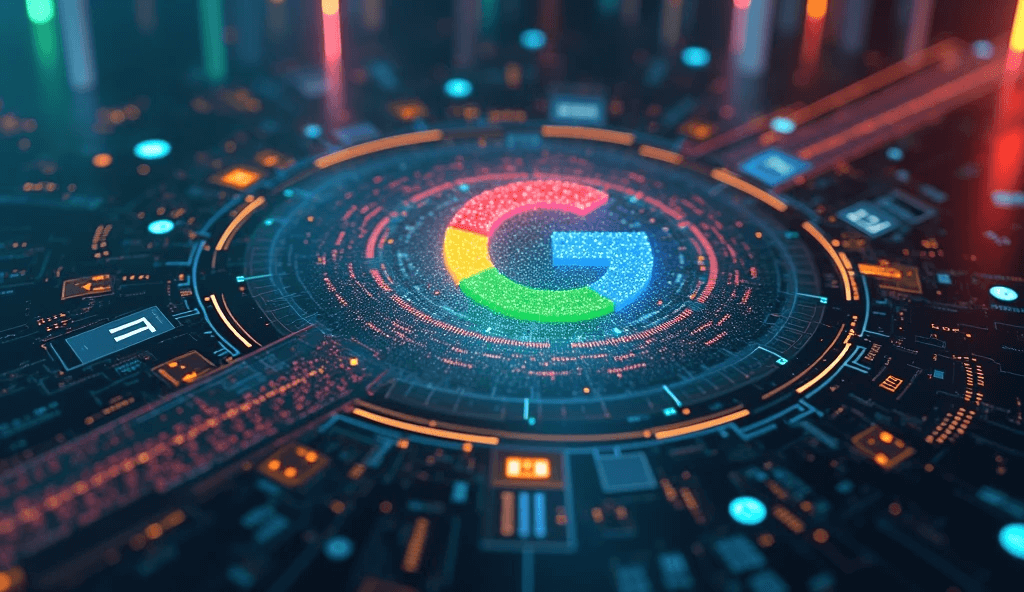
SEO (Search Engine Optimization) is a long-term strategy for websites to acquire organic traffic, increase brand exposure, and achieve conversions. A complete SEO strategy mainly consists of two core modules: On-Page SEO and Off-Page SEO.
Both hold comparable importance in search engine ranking systems but have a clear execution sequence: On-Page SEO is the foundation, while Off-Page SEO is the extension. Only after the on-site structure, content, and technical optimizations are in place and initial search visibility and ranking are achieved should off-site link-building promotion based on data performance begin.
Additionally, from an execution perspective, On-Page SEO is the part we can 100% control and continuously improve. Although it involves many details, it is manageable. Off-Page SEO, on the other hand, heavily depends on cooperation from external websites, especially in obtaining backlinks, which carries significant uncertainty.
On-Page SEO: Controllable, Systematic, and Technically Intensive Basic Optimization
On-Page SEO is the starting point of all SEO work. It involves optimizing multiple dimensions of the webpage itself, including structure, code, content, tags, and data standards, with the goal of improving the site’s crawlability, readability, and search engine friendliness.
Excellent On-Page SEO is not just a technical task but a comprehensive coordination process between content strategy, user experience, and search engine guidelines. Core execution includes:
- Page Structure Optimization: Organize page content using semantic HTML tags (such as
‘h1’to‘h3’,‘section’,‘article’, etc.) to enhance readability and crawling efficiency. - Meta Data Settings: Set unique and standardized
‘title’and‘meta description’tags for each page, appropriately inserting keywords to improve CTR (click-through rate). - Structured Data Markup: Add structured markup to content using syntax like Schema.org to help search engines understand the page type and display rich results (such as ratings, product information, FAQs, etc.).
- Index Control: Use
tags or page settings to determine which content is allowed to be crawled and indexed by search engines, avoiding unnecessary duplicate indexing. - Duplicate Page and Redirect Management: Use technical methods such as Canonical tags, 301 redirects, and pagination specifications to manage duplicate content and maintain concentrated ranking signals.
- Robots.txt File Configuration: Controls search engine access paths to avoid crawling unnecessary resources such as admin areas and test pages.
- XML Sitemap Configuration: Generates and submits a clear site map to help search engines discover all indexable pages.
- Webmaster Platform Data Monitoring and Feedback: Regularly monitor website health and respond to issues promptly using tools like Google Search Console and Bing Webmaster Tools.
Off-Page SEO: External Support for Authority Building and Trust Transmission
In contrast, the main goal of Off-Page SEO is to enhance the website’s “authority” and “trustworthiness” in the eyes of search engines, primarily through building high-quality backlinks. However, it is worth noting that instead of relying on external platforms to gift links, it is a more sustainable strategy to first establish authority within your own site so that others are “willing to reference you.”
1. Execution Characteristics and Key Challenges
- Backlink Building: Obtain backlinks from other authoritative websites through content collaboration, media releases, industry citations, resource exchanges, etc.
- High Uncontrollability: Whether links are acquired usually depends on whether the other website recognizes your content or brand value, which is uncertain.
- Content-Driven Core: Only by providing valuable content (such as industry research, guides, tools, etc.) can you attract proactive citations, making backlink quality controllable.
On-Page and Off-Page SEO: An Optimization Closed Loop through Synergy
In the actual web design and SEO execution process, On-Page SEO should be the foundational work to ensure each page has good crawlability, content relevance, and user experience; while Off-Page SEO serves as trust reinforcement, leveraging external authority to further improve keyword rankings. This “controlled on-site + enhanced off-site” synergy is the best approach to build a stable and efficient search traffic system.
四、Website Security and Privacy Policy Compliance

In today’s highly digitalized business environment, users’ concerns about website security and privacy protection are increasing. Whether it’s search engine rankings, brand credibility, or conversion rates, all are closely linked to whether a corporate website is compliant and secure. A website with a solid security foundation and privacy compliance not only effectively prevents risks such as data breaches and attacks but also establishes a “trustworthy” brand impression from the outset.
Therefore, compliance strategies must be integrated into the overall architecture from the early stages of website design and development, especially including SSL certificate configuration and GDPR/Cookie compliance handling. These are core components that cannot be overlooked when building a high-conversion website.
In the process of building a high-conversion website, security and compliance should never be treated as an “after-launch” add-on. They should be a foundational framework of web design and development, forming, together with brand tone, functional architecture, and visual presentation, a credible, lawful, and competitive digital asset.
Configuring SSL Security Certificates: The First Step to Website Credibility
The configuration of an SSL (Secure Sockets Layer) certificate is a fundamental security task for websites. It encrypts data transmission between users and the website, ensuring information is not intercepted in transit and preventing sensitive data leakage.
1.Why must SSL be enabled?
- All major browsers issue “Not Secure” warnings for sites without HTTPS, seriously affecting user trust.
- Google explicitly considers HTTPS as a ranking factor, so enabling SSL benefits SEO performance.
- It supports secure encryption for data-interactive websites such as those with form submissions and payment interfaces.
2. Configuration Recommendations
- Choose a reputable SSL certificate authority (such as the free Let’s Encrypt, DigiCert, Sectigo, etc.).
- Ensure HTTPS is enabled site-wide with automatic HTTP → HTTPS redirection.
- For pages involving form submissions, admin login pages, etc., enforce strong encryption (e.g., TLS 1.3).
Compliance with GDPR and Cookie Policies: Necessary Practices for User Privacy Protection
The European Union’s General Data Protection Regulation (GDPR) and its extended Cookie policies have become important global standards for internet privacy compliance. Even if a company is not located within the EU, it must comply when providing services to or collecting data from European users. It is recommended to use professional cookie management platforms such as CookieYes, Complianz, or embedded code tools to achieve dynamic compliance management.
1. Main Requirements for Cookie Compliance
- Before users enter the website, a clear cookie notification banner must be displayed explaining the purpose of data collection.
- Non-essential tracking codes (such as Google Analytics, Facebook Pixel) must not load before the user explicitly consents.
- Provide options for “Accept,” “Reject,” and “Custom Settings” allowing users to manage their cookie preferences.
- User cookie consent records should be recorded and stored, accessible in the backend for review.
2. GDPR Compliance Recommendations
- Clearly display a privacy policy page explaining how user data is collected, processed, and used.
- Add a privacy consent checkbox to forms and ensure data is transmitted securely via encryption.
- Provide channels for users to request data access, deletion, or modification.
Beyond Compliance: Security and Privacy as Foundational Assets of Brand Trust
Compliance is not just a “legal requirement” but the foundation of a company’s brand reputation in the digital world. Users’ trust in security directly determines whether they are willing to provide personal information, fill out inquiry forms, or complete transactions. Therefore:
- A corporate website that enables HTTPS, displays a privacy policy, and manages cookies legally conveys a “professional and trustworthy” brand image at first glance.
- Conversely, websites lacking privacy policies, showing browser security warnings, or without cookie options are easily perceived by users as “unprofessional” or “untrustworthy.”
五、Submitting Websites to Major Global Search Engines to Acquire Traffic

After completing the website’s brand visual identity design, content structure layout, On-Page SEO settings, and security and privacy compliance work, the website enters the official launch phase. To truly convert these efforts into sustainable organic traffic, the final step is crucial: actively submitting the website to major global search engines to establish crawl entry points and enhance the webpage’s visibility in search engines.
Active submission is not an optional operation; it is the foundation to ensure the website is smoothly discovered, indexed, and displayed by search engines. Especially for newly built websites or corporate brand official sites launched for the first time, if the sitemap or homepage links are not actively submitted to search engines, the site may not be automatically indexed for a long period, missing the traffic window.
Actively submitting the website to major search engines is the key step to move a corporate website from “launch completed” to “discovered by users.” Only a site with good indexing status, clear structure, and focused content can truly compete in the global digital market and gain continuous organic traffic and conversion opportunities.
Prerequisites for Submission: Ensure Crawlability and Indexing Readiness
Before performing search engine submission, the website must meet the following basic conditions. It is also recommended to use the PageSpeed Insights tool to conduct a comprehensive performance and accessibility check before launch to identify potential issues early.
- All pages have HTTPS enabled with no certificate errors.
- Pages have no significant rendering or script errors, and content loads properly.
- Page and meta description, along with other meta information, are correctly filled out.
- Configure the robots.txt file to allow search engines to crawl key paths.
- Create and verify the XML Sitemap listing all indexable pages.
- Complete website ownership verification via Google Search Console and Bing Webmaster Tools.
Submitting Websites to Major Global Search Engines: Priorities and Processes
Not all search engines require separate submission. For enterprise websites focused on cross-border business, priority should be given to the following major engines:
1. Google – The Global Market Leader
- Tool platform: Google Search Console
- Submission method: Upload and submit XML Sitemap, or manually submit URLs via the “URL Inspection” tool.
- Advantage: Google holds about 90% of the global search engine market share and is the primary source of international organic traffic.
- Additional recommendation: Configure hreflang tags for different language/region versions of the website to avoid duplicate indexing and improve local rankings.
2.Bing – Essential for North America and the Microsoft Ecosystem
- Tool platform: Bing Webmaster Tools
- Submission method: Similar to Google, supports sitemap uploads and individual page submissions.
- Advantage: Bing’s database is also used by Yahoo and DuckDuckGo.
- Practical effect: Submitting once to Bing is equivalent to submitting to three search engine platforms.
3. Notes on Other Search Engines
- Yahoo / DuckDuckGo: No need for separate submission, as they have integrated Bing’s data source.
- Yandex (Russia): If the company plans to expand into Russian-speaking markets, submissions can be made via the Yandex.Webmaster platform.
- Baidu (China): If the website targets international markets, Baidu indexing has less strategic significance and can be skipped.
After Submission: Continuous Monitoring and Optimization
Submitting the website to search engines is not a “one-time task” but the beginning of the SEO operational cycle.
1. Follow-up Recommendations
- Regularly check the Sitemap report and crawl status to confirm whether pages have been successfully indexed.
- For pages not indexed, analyze causes such as crawl errors, thin content, or indexing blocks.
- Optimize content and adjust internal links for keywords or pages with poor ranking performance.
- Use tools like Google Analytics to monitor traffic sources and page performance, creating a feedback loop.
Conclusion
In today’s increasingly competitive digital environment, a truly high-converting corporate website is no longer a simple showcase page but a comprehensive digital platform integrating brand visuals, content strategy, SEO optimization, security compliance, and user experience. This article systematically outlines the full process from brand positioning to content conversion, from on-site technology to search engine traffic acquisition, hoping to provide enterprises with a practical and implementable website construction reference path during digital transformation.
Behind a high-conversion website lies the collaborative realization of strategy, technology, and aesthetics. If your company is preparing to build or redesign its official website, consider this article as a starting point to reassess the commercial value each webpage carries.
Finally, if you want to learn more about how to build an efficient website tailored to your brand, feel free to contact 【SZLOGIC Digital Technology】. We will tailor high-standard, conversion-oriented digital solutions for you.
This article is copyrighted by SZLOGIC Digital Technology. Personal sharing and study are welcome. Without authorization, any commercial use or reprinting of this article is strictly prohibited.



